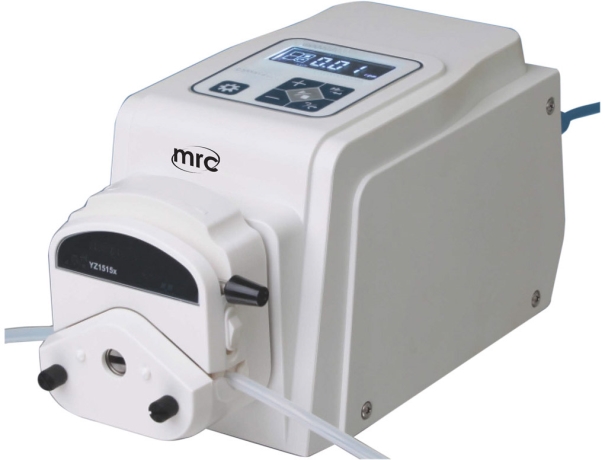Peristaltic pumps are positive displacement pumps that use a rotating roller or shoe to compress and pump liquid through a flexible tube. Peristaltic pumps are often used in industrial and medical applications where other types of pumps would be impractical or unable to meet the required specifications.
How It Works
The basic principle of the peristaltic pump is that a flexible tube is squeezed by a rotating roller or shoe, which creates a vacuum at the suction side of the pump. This vacuum pulls liquid into the pump from the suction side, and the liquid is then pushed towards the discharge side of the pump by the rotating roller or shoe.
Peristaltic pumps are typically used to pump viscous or abrasive liquids, as the flexible nature of the pump tubing protects the liquid from being damaged by the pump's moving parts. The pump employs a rotor with two or more rollers or shoes, which press against the tubing and force liquid through it.
Uses Of Peristaltic Pumps
Peristaltic pumps are often used in industrial and medical applications where other types of pumps would be impractical or unable to meet the required specifications. Some common applications include:
-Pumping corrosive or abrasive liquids
-Pumping viscous liquids
-Transferring hazardous materials
-Food and Beverage Industry
-Laboratory applications
-Wastewater Treatment

The Many Benefits Of Peristaltic Pumps
The flexible nature of the pump tubing protects the liquid from being damaged by the pump's moving parts. thr pumps can run dry without damage. They are self-priming and can be used in applications where other pumps would require a mechanical seal.
Peristaltic pumps are often the pump of choice in applications where contamination must be avoided, such as in the food and beverage industry or laboratory applications. The pumping action of a peristaltic pump is also ideal for viscous liquids or liquids with particulates, as it minimizes shear and degradation.
It can run dry without damage. They are self-priming and can be used in applications where other pumps would require a mechanical seal. Peristaltic pumps have a wide range of flow rates and can be easily scaled to meet the needs of your application.
They are relatively simple to operate and maintain and have a long service life. When properly maintained, a peristaltic pump can last for many years.

How To Use Peristaltic Pumps?
The first thing to consider when selecting a peristaltic pump is the application. What type of liquid will be pumped, and what are the flow rate and pressure requirements? The next thing to consider is the size and scale.Peristaltic pumps are available in a wide range of sizes, from small pumps that can be handheld to large industrial-size pumps.
Once the application and size of the peristaltic pump have been determined, the next step is selecting the right pump tubing type. Various materials are available, and the choice of material will depend on compatibility with the liquid being pumped. After the pump and tubing have been selected, it is time to install the pump. Peristaltic pumps are easy to install and can be used in various applications.
Determine the flow and pressure requirements for the application and follow the instructions provided by the pump manufacturer. Peristaltic pumps are easy to operate and maintain and have a long service life. When properly maintained, a peristaltic pump can last for many years.
The temperature of the pumped media also needs to be considered when selecting a peristaltic pump. You can only use up some materials to a certain temperature; beyond that, they will degrade or even melt. It is important to check the compatibility of the pump tubing with the liquid being pumped.
Proper maintenance of a peristaltic pump includes regular inspection and replacement of the pump tubing. It is also important to keep the pump clean and free of debris.
Final Words
In conclusion, There are many advantages that need to be considered before purchase. They are easy to install and maintain and have a long service life, but they can be more expensive than other types of pumps and are not suitable for every application. Additionally, In addition, the device has a limited flow rate and can only pump liquids with a certain viscosity.